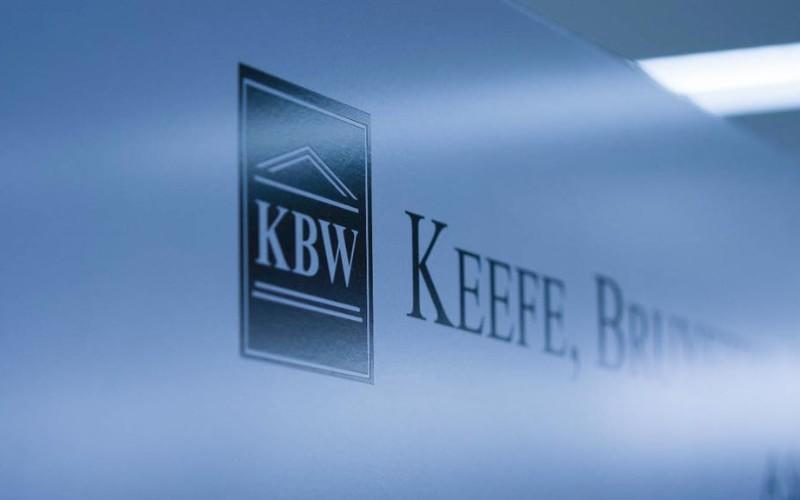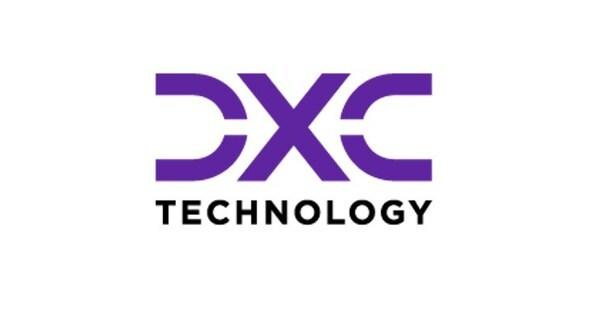News

State Farm hit with lawsuit as policyholders claim AI-driven discrimination
State Farm is at the center of a new lawsuit as policyholders allege the insurer used AI and unfair practices to delay and deny claims
State Farm faces a federal lawsuit alleging the use of discriminatory algorithms and unfair claims practices that allegedly targeted elderly, disabled Black homeowners in Alabama.
A newly filed complaint in the United States District Court for the Middle District of Alabama details sweeping allegations against the State Farm Insurance Company and its agent, Kris Stallworth. The plaintiffs, Gregory Kelly and Annette B. Kelly, both elderly and disabled residents of Montgomery, Alabama, claim State Farm subjected their insurance claims to heightened scrutiny because of their race and disabilities, resulting in delayed payments and financial hardship.
At the center of the lawsuit is the Kellys’ assertion that State Farm failed to make prompt payment for lightning and water damage to their home, totaling $372,437.36. The complaint alleges that State Farm’s Premier Service Program (SFPSP) contractors, including Servpro and HVACi, committed acts of gross negligence and breached contractual obligations by filing false engineering and environmental reports about the damage. The plaintiffs allege these actions led to delays in urgent home repairs and devalued their property.
The complaint goes further, accusing State Farm of exploiting elderly, blind, and partially blind policyholders by selling them unneeded, unnecessary, overpriced, or unsuitable insurance products. The Kellys allege that State Farm used false data from credit reporting agencies to deny, refuse, or cancel insurance contracts, and that these practices disproportionately harmed Black and non-white policyholders. According to the complaint, State Farm’s claims-processing methods relied on “cheat and defeat AI algorithms as discriminatory tools,” which the plaintiffs say subjected their claims to greater scrutiny than those of white policyholders.

California Department of Insurance brings enforcement actions against Tesla companies to stop insurance business practices harming California drivers
The California Department of Insurance issued enforcement actions today against Tesla Insurance Services, Inc. and Tesla Insurance Company, plus State National Insurance Company, in order to protect consumers after the companies repeatedly failed in their legal obligations to adequately handle hundreds of California automobile policyholder claims.
The actions allege Tesla's repeated failures to comply with long-standing claims handling laws, including delaying claims payments and not timely responding to consumers.
Tesla Insurance Services, Inc. is an appointed agent for State National, an admitted insurer in California. Unless these issues are resolved in favor of policyholders beforehand, the companies will be ordered to a hearing before an administrative law judge to determine whether they will be able to maintain their ability to transact insurance business in California as well as face significant monetary penalties.
The actions allege that, despite being repeatedly warned by the Department of Insurance, the Tesla companies and State National instead chose to abandon their responsibility to consumers and persist with their non-compliant claims-handling practices, placing profits above people and flouting the law with impunity.
After continuing to receive a significant number of consumer complaints related to the handling of their automobile policyholder claims beginning in 2022, the Department of Insurance repeatedly warned the Tesla companies and State National of the significant harm to their policyholders — largely Tesla drivers — unless immediate corrective actions were taken.
Research

Earnings windfalls and pricing pressure may be the talk of Q3 P&C reporting: KBW - Reinsurance News
Analysts at KBW have suggested that very low catastrophe losses, reflecting the near-total absence of U.S.-landfalling hurricanes, together with the resulting strong EPS and BVPS growth, well-funded share repurchases, and larger expected 2026 property reinsurance rate decreases, will dominate Q3 2055 earnings calls.
With the peak of the Atlantic hurricane season now passed, 2025 has seen minimal U.S. hurricane activity, a development insurers will point to when explaining benign catastrophe hit rates in Q3 2025.
These light U.S. hurricane losses, coupled with elevated industry losses from other perils, sit alongside abundant reinsurance capacity. In fact, Global reinsurance capital has risen to a new high of $805 billion, according to Gallagher Re.
This ample capital base is helping to blunt reinsurance pricing and underpin the expectation of larger property reinsurance rate decreases heading into 2026.
KBW also stressed that Q3 2025 P&C earnings should reflect slowing, but still positive, commercial and specialty net written premium growth as commercial casualty rate increases decelerate, company-specific commercial casualty reserve development, and solid core personal auto and homeowners underwriting results with mostly improving PIF growth.

IBHS Study Shows Smaller Hail May Be More Damaging to Roofs Than Once Believed
[Ed.note: Does this change everything applied to hail damage roof claims decisions or more recognition of repeated weather exposure, wear/tear and the overacting costs of homeownership and insurance?]
A study by the Insurance Institute for Business and Home Safety (IBHS) found roof damage from smaller hailstones may be much more significant than previously believed. It’s a finding that one plaintiffs’ lawyer has already cited as potential support for roof claims.
“This data challenges long-standing opinions by insurance company experts that have denied or minimized damage from small hail,” blogged attorney Chip Merlin, whose law firm has offices in 10 states. “If the science says these storms age shingles years ahead of schedule and set the stage for catastrophic failure in later storms, then dismissing that damage at the claims desk is at odds with the evidence.”
An insurance defense lawyer said the study shows only that smaller hail can cause damage over time, much like rain or sun, and long-term wear and tear is often excluded from homeowners policies.

Experts issue warning on concerning trend putting huge strain on US homeowners: 'Critical conversations we need to be having right now'
Wildfires in the western U.S. are causing immense strain on the insurance industry as well as homeowners.
What's happening?
ABC News reported that the data research company Cotality issued its yearly wildfire risk report, outlining the risk of wildfires in certain areas of the U.S. and the state of the wildfire insurance industry.
According to the report, over 2.6 million homes in 14 Western states currently face either a moderate or greater wildfire risk. Nearly half of those homes are at very high risk, and over 1.2 million homes located in California are at moderate or greater risk. The estimated total cost to replace all these homes if a wildfire were to destroy them is $1.3 trillion.
The result of all this risk is that the insurance industry is becoming strained, and people in these areas are facing more challenges to homeownership, including rising reconstruction costs, increased insurance costs, and, more often, a complete loss of insurance coverage after damaging wildfires.
Tom Larsen, Cotality's assistant VP of product marketing for insurance solutions, explained, per ABC News:"Building with wildfires in mind and introducing mitigation measures for where we have already built is one of the critical conversations we need to be having right now."
Why is this report concerning?
Rising insurance rates and the loss of coverage are an increasing problem that makes owning a home riskier and less affordable. The Treasury Department released a report this year examining insurance data trends from 2018 to 2022 and found that insurers' costs were greater in regions with a higher anticipated risk loss from extreme weather events, as the number and severity of insurance claims increased.
Commentary/Opinion

Flawed Credit Data Threatens Insurance Decisions
Headlines about used car loan companies imploding may not get much attention at insurance companies, but this “old news” from the Fed should: Those companies have been making risk assessments based on wonky data and are paying the price. (The Effects of Credit Score Migration on Subprime Auto Loan and Credit Card Delinquencies).
There is a punch line here for auto insurers. You are relying on the same wonky data, so your risk scores will likely perform worse than historically expected, too.
FALSE NEGATIVES
A false negative occurs when a fact you intend to observe is not visible. A classic in the literature is a pregnant woman who takes a pregnancy test that returns a negative result. In that case, you can blame the test. But a more subtle case is what the Fed is showing now, where the problem is with the data.
Data is missing that typically weighs down a credit score and is thus driving scores higher—while the riskiness remains the same.
Imagine a historically stable data process where good and bad observed data drive positive and negative features that calibrate a risk score. If a time or place existed where bad things were not tracked as usual (thanks, COVID) or penalties were simply less enforced (thanks, COVID), then risk scores would rise for no good reason. The COVID timeframe encouraged a period of financial transaction forbearance unlike any we have experienced in modern times.
Auto insurance has other false negatives, too. Having less enforcement of traffic rules (thanks, COVID) and less availability of traffic courts (thanks, COVID) caused similar problems with reporting on motor vehicles. For example, running red lights may have produced no tickets -- still very risky behavior, just with no typical negative indication on record. The same with speeding tickets, which haven’t been issued as frequently in recent years.
The simple equation of score = intercept + good factors - bad factors means that the absence of a bad factor mathematically leaves a score in better shape than it deserves.
Marty Ellingsworth is president of Salt Creek Analytics. He was previously executive managing director of global insurance intelligence at J.D. Power.
InsurTech/M&A/Finance💰/Collaboration

DXC Launches APEX Partnership Program to Connect Insurers with Certified InsurTech Providers
DXC Technology (NYSE: DXC), a leading Fortune 500 global technology services provider, today announced the launch of the DXC APEX (Assure Platform Ecosystem Exchange) Program, a new initiative that establishes a central hub for integration between (re)insurers, brokers, and certified InsurTech providers via the DXC Assure Platform.
The program addresses a longstanding industry challenge for insurers: fragmented, complex, and costly integration with third-party solutions. Pre-built integrations between DXC products and APEX partner offerings, facilitated by DXC's Assure Platform, significantly accelerate (re)insurers' and brokers' ability to adopt new capabilities and services, reduce operational friction and security risk, and unlock efficiencies across their businesses.
The DXC Assure Platform is a comprehensive cloud-based service that enables insurers to protect, extend, and transform their core systems while reducing costs and risks. Serving as the foundation for DXC's Insurance SaaS offerings, the platform supports both legacy and next-generation systems with services for hosting, compliance, security, operational insights, and seamless integration. With advanced AI tools and automation, insurers can streamline critical processes accelerating their path toward fully digital operations.
"The launch of the DXC APEX Program marks a significant step forward in our commitment to helping the insurance industry embrace innovation," said Patrick Molineux, Vice President Global Offerings at DXC. "By extending our robust, certified partner ecosystem, APEX is enabling insurance providers to modernize faster, adopt emerging technologies, and enhance security screening and enforcement. With the tools to operate with greater resilience and efficiency, insurers can ultimately deliver greater value to their customers."
Telematics, Driving & Insurance

Driver-Monitoring Technology Reaches New Milestone - ValuePenguin
Key safety award to require monitoring tech by 2030 or sooner
New car technology that watches the driver for risky behavior is growing in acceptance and will soon be a requirement for cars to receive the prestigious Insurance Institute for Highway Safety’s (IIHS) Top Safety Pick+ award.
The IIHS plans to add certain types of driver-monitoring technology to its list of safety requirements by 2030 or sooner. The hope is that, like the seatbelt and airbag before it, driver-monitoring technology will help lower the number of U.S. roadway deaths, which reached 41,000 in 2023, according to the National Highway Traffic Safety Administration.
What is driver-monitoring technology?
If you’ve recently driven a newer vehicle, chances are you’ve already encountered the type of driver-monitoring technology the IIHS is talking about. They use a combination of interior cameras, sensors, GPS vehicle tracking and artificial intelligence to detect risky driver behaviors or conditions, like drowsiness or distracted driving.
The system may sense when drivers look away from the road or close their eyes for extended periods. It might also pick up on distracting activities like mobile phone use or eating and drinking. The system may generate an alert — a sound alert or a dashboard warning, for example — to notify the driver.
What is the IIHS Top Safety Pick+?
The Top Safety Pick+ qualification is added only to the year-model vehicles that demonstrate the highest safety standards. Carmakers compete for it and might design future models with these standards in mind.
The specific criteria for the award change each year. In 2020, the IIHS added quality requirements for standard-equipped headlights, and in 2023, it added a child-sized, crash test dummy in the rear seat to select tests.
Today

Race to the Bottom - Destructive Cycle in P&C Insurance Ecosystem
Destructive Cycle in P&C Insurance Ecosystem
We were recently having a discussion with insurance industry peers, bemoaning the topic of a vendor announcement of significantly lower pricing for a popular service in a fiercely competitive segment of the collision repair industry. As we thought about it more broadly, we agreed that it was just the latest in a long series of strategic decisions which reflect the serious threat of a problem we will call a race to the bottom.
The term “race to the bottom” describes a competitive situation where companies lower prices to gain an advantage. The origins of this process are often thought to be a result of globalization and government attempts to bolster their economies. A race to the bottom tactic most often sparks a destructive cycle in which the ultimate outcome is negative for all involved.
The Property & Casualty insurance ecosystem is one of the largest US economic segments and touches hundreds of millions of consumers and businesses. It is a victim of this race to the bottom in many serious ways – some well recognized but even more less visible and rarely discussed candidly. The recent roller coaster cycles of steep rate increases, underwriting losses now turning into gains and corresponding efforts to contain operating costs also has downstream implications to scores of industry service and solution providers.
Property & Casualty Insurance Ecosystem
Prior to 2021 both auto and homeowner insurance lines experienced this very competitive scenario. Advertising budgets swelled with leading carriers like Progressive spending at $1.95B and GEICO at $1.13B respectively in 2020. “Switch and save” marketing was everywhere with telematics, usage-based-insurance offers to “bundle and save” luring price sensitive consumers.READ ON
Stephen Applebaum and Alan Demers
Payments

Payments Define the Moment of Truth in Insurance Claims
Insurance is often defined by its pain points: accidents, losses, disruptions and the frustration that comes with filing and settling claims. For policyholders, friction begins with paperwork, documentation and back-and-forth with adjusters.
Yet the most defining moment comes at the end — when the payout arrives. The speed, ease and flexibility of that payment can make the difference between a claimant who leaves and one who becomes a loyal customer.
Sarah Owen, chief product officer at One Inc, said that while the claims process has many moving parts, it’s the payment that ultimately cements how the customer feels. “You are sending pictures; you’re going back and forth with the adjuster. When you finally come to terms with the adjuster on what that claim amount is, you want that payment very fast.”
People

Tim Quick of Swiss Re Elected President of ICA | Insurance Innovation Reporter
The International Claim Association (ICA) has elected Tim Quick, Global Head, Product Development, Life and Health Claims Solutions, at Swiss Re (Armonk, N.Y.), as President of its Board of Directors. The election took place during the 2025 ICA Annual Education Conference at the New Orleans Marriott in New Orleans, La.**
“I am honored to serve as President of the ICA at such a transformative time in our industry,” comments Quick. “I look forward to working alongside our talented members to advance best practices in claims and to help shape the future of insurance.”
Quick oversees the global delivery and expansion of Swiss Re’s flagship claims management platform, PromiseXP. He has extensive experience in claims management, in-force operations, and reinsurance administration across the life and health insurance sector.
Before joining Swiss Re, Quick was Head, Insurance Operations, at a U.S.-based InsurTech, where he led carrier operations for an acquired life insurer and played a key role in product development and delivery. Earlier in his career, he held leadership positions in claims and operations at several direct carriers.
Quick holds a Bachelor of Science in psychology and an MBA from Michigan State University. He also earned the ALMI and ACS designations from LOMA, a Certificate in Applied Project Management from the University of California, and certification in Product Management from Cornell University.
A longtime ICA member, Quick has served on the Board of Directors, participated in the Life & Annuity Committee, and co-founded the Technology and Analytics Committee. As ICA President, he will lead efforts to advance professional development and innovation within the claims community.

